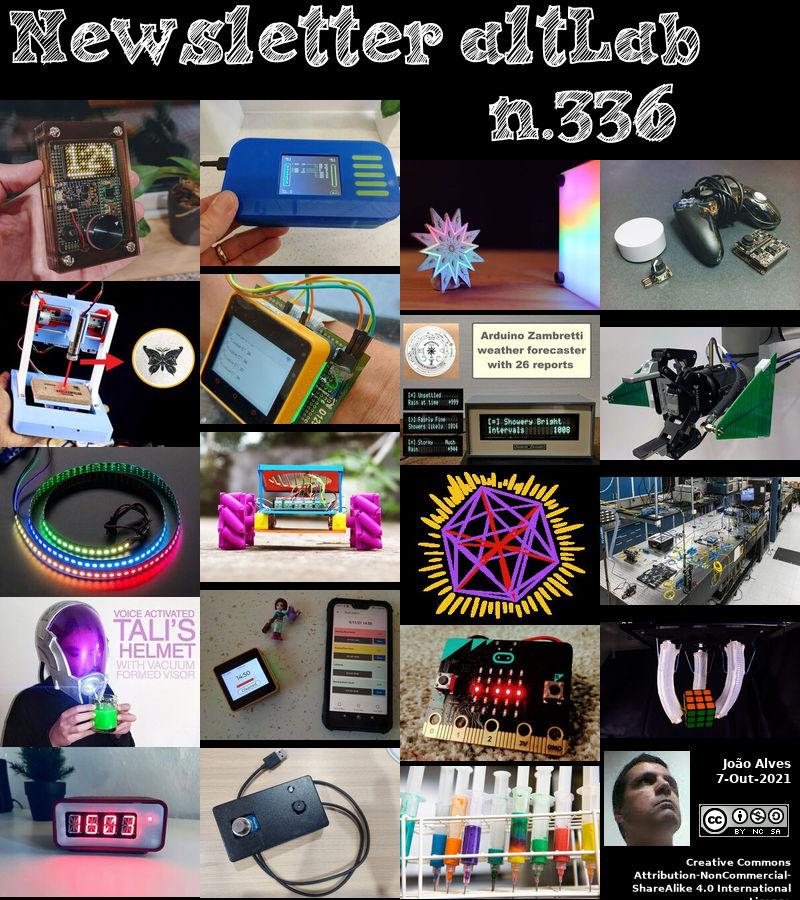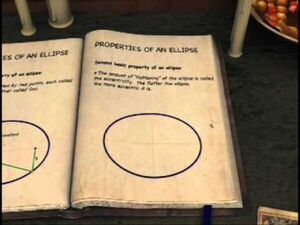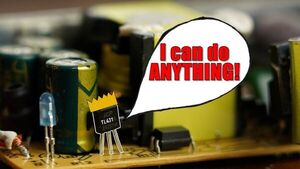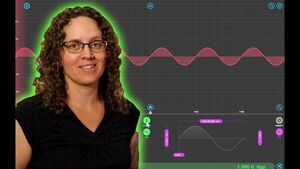2021-10-07 - Nº 336
Editorial
Esta é a Newsletter Nº 336 que se apresenta com o mesmo formato que as anteriores. Se gostar da Newsletter partilhe-a!
Todas as Newsletters encontram-se indexadas no link.
Esta Newsletter tem os seguintes tópicos:
Faz hoje anos que nascia, em 1885, o físico dinamarquês Niels Bohr. Ele foi o primeiro a aplicar a teoria quântica, que restringe a energia de um sistema a certos valores discretos, ao problema da estrutura atómica e molecular. Por este trabalho, recebeu o Prémio Nobel da Física em 1922. Desenvolveu a chamada teoria de Bohr do átomo e modelo líquido do núcleo. Bohr era de origem judaica e quando os nazis ocuparam a Dinamarca escapou em 1943 para a Suécia, num barco de pesca. De lá foi transportado de avião para Inglaterra, onde começou a trabalhar no projecto de fazer uma bomba de fissão nuclear. Após alguns meses, foi com a equipa de investigação britânica para Los Alamos, nos EUA, onde continuou a trabalhar no projecto.
Faz também hoje anos que nascia, em 1939, o químico inglês Harry Kroto. Ele partilhou (com Richard E. Smalley e Robert F. Curl, Jr.) o Prémio Nobel da Química de 1996 pela sua descoberta conjunta dos compostos de carbono chamados fullerenes. Estas novas formas do elemento carbono contêm 60 ou mais átomos dispostos em conchas fechadas. O número de átomos de carbono na concha pode variar, e por esta razão numerosas novas estruturas de carbono tornaram-se conhecidas. Anteriormente, eram conhecidas seis formas cristalinas do elemento carbono, nomeadamente dois tipos de grafite, dois tipos de diamante, caoit (1968) e carbono(VI) (1972). Os fullerenos formam-se quando o carbono vaporizado condensa numa atmosfera de gás inerte. Os aglomerados de carbono podem então ser analisados com espectrometria de massa.
Em 1959 a sonda russa Luna 3 fotografava pela primeira vez o lado escuro da Lua. O objectivo da missão da sonda Luna 3 era fornecer as primeiras imagens do lado escuro da Lua. Para conseguir isto, a sonda foi equipada com uma câmara com uma lente de 35 mm, uma lente de 200 mm, com abertura de f/5.6, e outra câmara de 500 mm com f/9.5. A sequência de imagens foi automaticamente disparada quando a foto-célula da sonda Luna 3 detectou o lado escuro da Lua, o que aconteceu quando a sonda passava a aproximadamente 64370 quilómetros acima da superfície lunar.
Nesta semana que passou foi lançado oficialmente o Windows 11 da Microsoft. Focado na experiência do utilizador o Windows 11 é a nova proposta da Microsoft para o Desktop do PC. Refrescando a interface já habitual do Windows trás um conjunto de aspectos inovadores e que de alguma forma quebram com o passado. Este passa a ter requisitos superiores aos do Windows 10 nomeadamente no espaço em disco necessário que é de 64GB, processador de 1 Ghz com pelo menos 2 cores, 4GB de memória RAM e o sistema com capacidade de UEFI e TPM 2.0. Tem também que suportar um ecrã de 9 polegadas e 720p mínimo com uma placa gráfica compatível com o DirectX 12 ou superior com drivers WDDM 2.0.
Na Newsletter desta semana apresentamos diversas noticias, artigos científicos, projetos de maker assim como alguns videos interessantes.
 João Alves ([email protected])
João Alves ([email protected])
O conteúdo da Newsletter encontra-se sob a licença  Creative Commons Attribution-NonCommercial-ShareAlike 4.0 International License.
Creative Commons Attribution-NonCommercial-ShareAlike 4.0 International License.
Novidades da Semana

Windows 11: A new era for the PC begins today
"Today marks an exciting milestone in the history of Windows. As the day becomes October 5 in each time zone around the world, availability of Windows 11 begins through a free upgrade on eligible Windows 10 PCs and on new PCs pre-installed with Windows 11 that can be purchased beginning today. Windows is a driving force for innovation. It’s an enduring platform for each one of us to create. And its home for over a billion people to do their jobs, live their dreams and connect with the people they love. We’re pumped to be launching Windows 11; the entire user experience brings you closer to what you love, empowers you to produce and inspires you to create." [...]
Outras Notícias

Working Overtime: NASA’s Deep Space Atomic Clock Completes Mission
"Geared toward improving spacecraft navigation, the technology demonstration operated far longer than planned and broke the stability record for atomic clocks in space. For more than two years, NASA’s Deep Space Atomic Clock has been pushing the timekeeping frontiers in space. On Sept. 18, 2021, its mission came to a successful end. The instrument is hosted on General Atomics’ Orbital Test Bed spacecraft that was launched aboard the Department of Defense Space Test Program 2 mission June 25, 2019. Its goal: to test the feasibility of using an onboard atomic clock to improve spacecraft navigation in deep space. Currently, spacecraft rely on ground-based atomic clocks." [...]
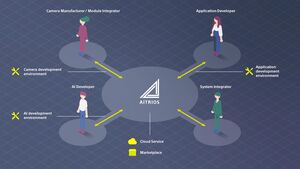
Sony to Launch Edge AI Platform Service AITRIOS™ To Streamline the Development and Implementation of AI Camera-Driven Sensing Solutions
"Sony Semiconductor Solutions Corporation (“Sony”) announced today that its AITRIOS™ edge AI sensing platform will launch in Japan, the U.S. and Europe starting from late 2021. Sony is now widely recruiting corporate partners, inviting their involvement in the development and implementation of AI camera-driven and other sensing solutions that will make the most of this platform. The AITRIOS platform makes it possible to streamline the development and implementation of AI camera-driven and other sensing solutions. The first step in the service entails providing a one-stop environment that offers various features that will make it easy for partnering solution providers such as AI developers, application developers, camera manufacturers/module integrators, and system integrators to build solutions spanning from edge to cloud. Through this platform, Sony seeks to facilitate development of optimal systems, in which the edge and the cloud function in synergy, to support its partners in popularizing and expanding environmentally conscious sensing solutions using edge AI, and to deliver new value and help solve challenges faced by various industries. Operating environment and challenges Advances in AI, the spread of IoT, and the accelerating digital transformation have resulted in an increasing need for sensing technology that extracts data from image sensors for recognition purposes, in order to provide new value and help solve business challenges." [...]

NXP and Partners Test Advanced V2X Application Scenarios for Collision-Free Driving
"NXP® Semiconductors has announced that it will showcase new safety scenarios enabled by vehicle-to-vehicle communication (Vehicle-to-X or V2X) as part of this year’s ITS World Congress in Hamburg. NXP will work together with partners such as premium manufacturer Riese & Müller, to highlight better protection for vulnerable road users, new V2X application scenarios designed to help prevent traffic accidents and e-bike safety demonstrations. NXP's V2X technology is based on 802.11p, a communication standard also known as DSRC (Dedicated Short-Range Communication). Optimized for automobiles, 802.11p allows vehicles, road infrastructure and other road users to exchange information in real time. Every year, more than 1.3 million people are killed in road accidents across the world and more than 50 percent of the fatalities are cyclists, pedestrians and motorcyclists. Technologies such as V2X and driver assistance systems can make a significant contribution to help reduce these numbers and are already in standard use in selected passenger car models today." [...]

High-Precision Voltage Reference IC Provides Very-Low Drift for Extended-Temperature Automotive Applications
"New device completes Microchip’s family of Vref products providing increased reliability and AEC-Q100 qualification Extended-temperature-range voltage reference ICs for automotive and industrial applications require low drift, high reliability and high performance. Microchip Technology Inc. (Nasdaq: MCHP) announced today the release of a high-precision voltage reference (Vref) IC that meets these needs at a cost-effective price. The new MCP1502 is an AEC-Q100 Grade 1 (-40°C to +125°C operating temperature range) automotive-qualified Vref with a maximum temperature coefficient of 7ppm/°C. “Microchip looked at the top four aspects that customers were requesting in a Vref and made a product that combines high reliability, small package size and high performance at a very cost-effective price,” said Fanie Duvenhage, vice president of Microchip’s mixed-signal and linear devices business unit. “This combination of features at this price is unmatched by competitors, especially when you add our experience in serving customers in the automotive and aerospace industries who require robust products for harsh environments.” The MCP1502 is based on the already-proven MCP1501 Vref architecture, which has been in the market for more than five years. Packaged in a small six-lead SOT-23, the MCP1502 is an ideal choice for a wide variety of industrial, automotive and aerospace applications that require a high level of reliability." [...]
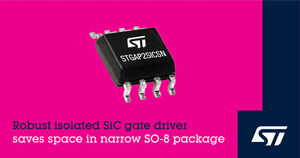
Robust Isolated SiC Gate Driver from STMicroelectronics Saves Space in Narrow SO-8 Package
"STMicroelectronics’ STGAP2SiCSN single-channel gate driver, optimized to control silicon-carbide MOSFETs, comes in a space-saving narrow-body SO-8 package and delivers robust performance with accurate PWM control. As SiC technology becomes widely adopted to boost power-conversion efficiency, the STGAP2SiCSN simplifies design, saves space, and enhances robustness and reliability in energy-conscious power systems, drives, and controls. Applications include electric-vehicle charging systems, switched-mode power supplies, high-voltage power-factor correction (PFC), DC/DC converters, uninterruptible power supplies (UPS), solar power, motor drives, fans, factory automation, home appliances, and induction heating. Featuring galvanic isolation between the gate-driving channel and the low-voltage control, the STGAP2SiCSN operates with up to 1700V on the high-voltage rail. The input-to-output propagation time of less than 75ns ensures high PWM accuracy, with reliable switching thanks to common-mode transient immunity (CMTI) of ±100V/ns. Built-in protection includes under-voltage lockout (UVLO), with a threshold tuned to prevent SiC power switches from operating in low-efficiency or unsafe conditions, and thermal shutdown that turns both driver outputs low if excessive junction temperature is detected." [...]

Renesas to Support ISO/SAE 21434 Standard for Future Automotive Microcontrollers and System on Chip Devices
"Cybersecurity Management System Updates Ensure Holistic Cybersecurity Across Entire Device Life Cycle Renesas Electronics Corporation (TSE:6723), a premier supplier of advanced semiconductor solutions, today announced its full commitment to meet the ISO/SAE 21434 road vehicles cybersecurity engineering international standard for its automotive microcontrollers (MCUs) and system on chip (SoC) solutions effective with new developments from January 2022. This is part of the company’s continued commitment to implement robust automotive cybersecurity management systems (CSMS) as part of the new UN Economic Commission for Europe (UNECE) regulation UN R155. The commitment reaffirms to original equipment manufacturers (OEMs) and Tier1 suppliers that Renesas will continue to meet its CSMS responsibilities. All future Renesas automotive MCUs and SoCs will sequentially follow the ISO/SAE 21434 standard with development starting from January 2022. This includes the company’s 16-bit RL78 and 32-bit RH850 MCUs as well as Renesas’ popular R-Car SoC Family. Both ISO/SAE 21434 (released on August 31, 2021) and UNECE UN R155 require cybersecurity to be enforced across the entire automotive supply chain." [...]
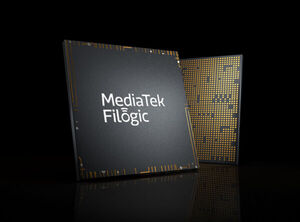
MediaTek Announces Filogic Connectivity Family with New Filogic 830 and Filogic 630 Wi-Fi 6/6E Chips
"Highly integrated chipsets offer fast, reliable connectivity with enhanced performance for broadband routers, mesh systems, enterprise access points and retail routers MediaTek today unveiled its new Filogic connectivity family with the introduction of the Filogic 830 Wi-Fi 6/6E system-on-chip (SoC) and Filogic 630 Wi-Fi 6E network interface card (NIC) solutions. MediaTek’s new Filogic series of high-performance Wi-Fi 6/6E chipsets provide reliable connectivity, high computation capabilities and a rich set of features in highly integrated, power-efficient designs. “The MediaTek Filogic series ushers in a new era of smart Wi-Fi solutions with extreme speeds, low latency and superb power efficiency for seamless, always connected experiences,” said Alan Hsu, Corporate Vice President & General Manager, Intelligent Connectivity at MediaTek. “These new chipsets provide best-in-class features with highly integrated designs for the next generation of premium broadband, enterprise and retail Wi-Fi solutions.” MediaTek Filogic 830 Filogic 830 packs a wide variety of features into a compact, ultra-low power 12nm SoC, allowing customers to design differentiated solutions for routers, access points and mesh systems. The SoC integrates four Arm Cortex-A53 processors operating at up to 2GHz per core for up to +18,000 DMIPs processing power, dual 4x4 Wi-Fi 6/6E for up to 6Gbps connectivity, two 2.5 Gigabit Ethernet interfaces and a host of peripheral interfaces. Filogic 830’s built-in hardware acceleration engines for Wi-Fi offloading and networking enable faster and more reliable connectivity." [...]
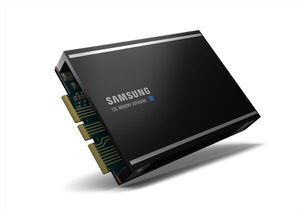
Samsung Introduces Industry’s First Open-Source Software Solution for CXL Memory Platform
"Comprehensive open-source software tools facilitate CXL memory deployment without the need to modify system applications By supporting memory virtualization, the new software kit enables conventional and CXL-based memory to work together seamlessly and efficiently Samsung Electronics, the world leader in advanced memory technology, today introduced the first open-source software solution, the Scalable Memory Development Kit (SMDK), that has been specially designed to support the Compute Express Link (CXL) memory platform. In May, Samsung unveiled the industry’s first CXL memory expander that allows memory capacity and bandwidth to scale to levels far exceeding what is possible in today’s server systems. Now, the company’s CXL platform is being extended beyond hardware to offer easy-to-integrate software tools, making CXL memory much more accessible to data center system developers for emerging artificial intelligence (AI), machine learning (ML) and 5G-edge markets. The CXL interconnect is an open, industry-backed standard that enables different types of devices such as accelerators, memory expanders and smart I/O devices to work more efficiently when processing high-performance computational workloads. “In order for data center and enterprise systems to smoothly run next-generation memory solutions like CXL, development of corresponding software is a necessity,” said Cheolmin Park, Vice President of the Memory Product Planning Team at Samsung Electronics. “Today, Samsung is reinforcing its commitment toward delivering a total memory solution that encompasses hardware and software, so that IT OEMs can incorporate new technologies into their systems much more effectively.” CXL Memory Adoption Made Easier Without the Need for Application Modifications Samsung’s SMDK enables the main memory and the CXL memory expander to work together seamlessly in heterogeneous memory systems." [...]
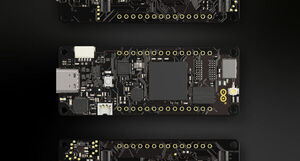
Portenta H7 Lite Connected hits another sweet spot for pro users
"We launched the powerful Portenta H7 last year. The more targeted Portenta H7 Lite just a few weeks ago. And we’re back (already! ), with another new product that fills the gap between the previous two versions. It’s known as Portenta H7 Lite Connected, but we like to call it “the best of both worlds.” The Portenta H7 Lite Connected is powerful, with integrated wireless connectivity, yet remains cost-optimized. You could think of it as the H7 with only one secure element and no high-resolution video interface." [...]

Fly by Mercury with this stunning new video from the BepiColombo spacecraft
"The European and Japanese BepiColombo spacecraft made the closest ever measurements of the magnetic field of Mercury above the planet's southern hemisphere as it zoomed past, snapping epic selfies along the way. European Space Agency (ESA) and Japan Aerospace Exploration Agency (JAXA) scientists are still processing the data that will present the first tiny contribution of the BepiColombo mission to the unravelling of the mysteries of the smallest and innermost planet of the solar system. The flyby, conducted on Friday (Oct.1), was designed to slow down BepiColombo in its orbit around the sun using Mercury's gravity. Five more such flybys will be necessary before the spacecraft can finally enter orbit around the planet in 2025. During the flyby, three monitoring cameras on the spacecraft's transfer module photographed the planet, with the results released as a short video on Monday (Oct. 4). This sequence of 53 images taken from distances of 620 to 57,800 miles (1,000 to 93,000 kilometers) represents BepiColombo's first glimpse of its target planet." [...]
Ciência e Tecnologia
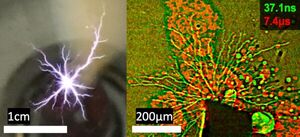
Lightning in the water: Ultrafast X-ray provides new look at plasma discharge breakdown in water
"Lightning is fast, but how fast? A Laboratory collaboration recently turned to synchrotron X-rays for an answer. The story of the discovery of the connection between electricity and lightning is well-known—in the 1700s, Benjamin Franklin, unaware of the danger of the electrical forces he was corralling, sent a key on a kite into the churn of a storm cloud. In the subsequent centuries, through experimentation and calculation, much has been learned about lightning, or plasma. But unanswered questions about the science of ultrafast processes such as plasma remain, the search for answers hindered in part by the limited technological capacity to capture images. In a setting more controlled than Franklin’s thunderstorm, a research team led by laboratory scientist Zhehui (Jeph) Wang of the Thermonuclear Plasma Physics group at Los Alamos National Laboratory has captured the first sub-nanosecond image of electrical discharge in water." [...]

Airborne antennas to address EMF concerns
"Movable airborne antennas receiving cellphone signals could reduce EMF exposure while offering higher data transmission speed and using less power. Mobile tethered drones might offer a speedy and environmentally friendly alternative for receiving terrestrial base stations while alleviating public concerns about exposure to electromagnetic fields (EMF). A solution has been proposed by masters student Zhengying Lou, postdoctoral fellow Ahmed Elzanaty and distinguished professor Mohamed-Slim Alouini of KAUST to address the widespread public concern about EMF exposure from mobile networks. “It is mainly a problem of perception,” says Elzanaty, “but this concern has led to attempts to destroy signaling towers, especially those associated with the 5G network.” He does point out, however, that recent experiments on animals link some adverse health impacts with long-term exposure to EMF, although at higher intensities than those produced by cellphone networks. Given the widespread public concern, tackling this issue might be commercially and reputationally advantageous for mobile signal providers. Elzanaty says that although most public concern focuses on exposure to EMF from network base stations — the towers located on high buildings and dotted across the rural landscape — the EMF exposure due to the radiation from mobile phones can be much higher than that from base stations." [...]
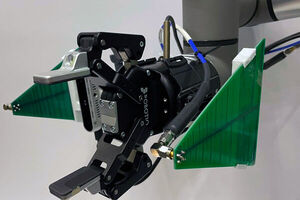
A robot that finds lost items
"A busy commuter is ready to walk out the door, only to realize they’ve misplaced their keys and must search through piles of stuff to find them. Rapidly sifting through clutter, they wish they could figure out which pile was hiding the keys. Researchers at MIT have created a robotic system that can do just that. The system, RFusion, is a robotic arm with a camera and radio frequency (RF) antenna attached to its gripper. It fuses signals from the antenna with visual input from the camera to locate and retrieve an item, even if the item is buried under a pile and completely out of view. The RFusion prototype the researchers developed relies on RFID tags, which are cheap, battery-less tags that can be stuck to an item and reflect signals sent by an antenna." [...]

Liquid Metal Coating Creates Effective Antiviral, Antimicrobial Fabric
"An international team of researchers used liquid gallium to create an antiviral and antimicrobial coating and tested it on a range of fabrics, including facemasks. The coating adhered more strongly to fabric than some conventional metal coatings, and eradicated 99% of several common pathogens within five minutes. “Microbes can survive on the fabrics hospitals use for bedding, clothing and face masks for a long time,” says Michael Dickey, co-corresponding author of a paper on the work and Camille & Henry Dreyfus Professor of Chemical and Biomolecular Engineering at North Carolina State University. “Metallic surface coatings such as copper or silver are an effective way to eradicate these pathogens, but many metal particle coating technologies have issues such as non-uniformity, processing complexity, or poor adhesion.” Dickey and colleagues from NC State, Sungkyunkwan University (SKKU) in Korea and RMIT University in Australia set out to develop a simple, cost-effective way to deposit metal coatings on fabric. First, the researchers placed liquid gallium (Ga) into an ethanol solution and used sound waves – a process known as sonication – to create Ga nanoparticles. The nanoparticle solution was then spray coated onto the fabric and the Ga adhered to the fibers as the ethanol evaporated." [...]
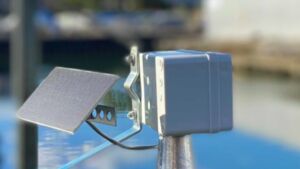
FloodNet: Hyperlocal flood sensors to support real-time flood monitoring, flood response, and urban resilience planning in NYC
"A public/private consortium including NYU Tandon, researchers at the City University of New York (CUNY) and NYC Mayor’s Office of Climate Resiliency and Mayor’s Office of the Chief Technology Officer plans to expand city-wide a pilot project of flood sensors. Whether the result of tidal flooding, extreme events like Hurricanes Henri and Ida, or more frequent cloudbursts, flooding affects public health and safety, mobility, infrastructure, and the city’s economy. In the face of climate change, which is likely to increase the frequency and severity of such events, the city needs access to real-time data providing critical information on when and where flooding occurs. However, the city has had limited data available on the frequency, extent, and depth of floods. In particular, there has been no quantitative, systematically-collected data on street-level flooding in NYC outside of reports made to NYC's 311 service request line. A multi-institutional collaboration, FloodNet, is addressing this challenge through the design, manufacture, and deployment of novel, low-cost, open-source sensors in flood-prone areas across NYC." [...]

A sharp look into tiny ferroelectric crystals
"What happens to ferroelectric materials when their dimensions are greatly reduced? A team of researchers at HZB has now been able to show how this question can be answered in a detailed way. Ferroelectric materials have a special inner structure. In the crystalline materials, ions align themselves differently within individual areas, the domains. This so-called polarisation can be changed or switched by electric fields or external pressure. These properties make ferroelectric materials interesting for various technical applications." [...]

Using Bundles of Fibers, Robots Mimic Nature
"Octopus tentacles can move in many directions, but also form stiff joint-like structures for more precise movements. Caterpillars can travel by using inchworm movements, as well as coil up and propel themselves away from predators. Such capabilities allow organisms to thrive in the natural, unstructured world. Creating robots with that kind of fluidity of movement, though, has been a challenge. But with the use of tensile jamming - that is, vacuum-induced interaction among a bundle of small fibers - a team of roboticists has developed soft robots that are dexterous enough to handle a Rubik’s Cube and twist the cap off a jar. The researchers, led by Rebecca Kramer-Bottiglio, the John J. Lee Associate Professor of Mechanical Engineering & Materials Science, had their results published today in Science Advances." [...]

Mathematicians solve an old geometry problem on equiangular lines
"How many lines can be pairwise separated by the same angle in high dimensions? Geometry breakthrough gives new insights into spectral graph theory. Equiangular lines are lines in space that pass through a single point, and whose pairwise angles are all equal. Picture in 2D the three diagonals of a regular hexagon, and in 3D, the six lines connecting opposite vertices of a regular icosahedron (see the figure above). Mathematicians are not limited to three dimensions, however. “In high dimensions, things really get interesting, and the possibilities can seem limitless,” says Yufei Zhao, assistant professor of mathematics." [...]

ITMO Researchers Increase Productivity Using Smart Lighting
"You can’t help but notice that your mood and productivity depend on lighting. Many researchers study this phenomenon and ITMO scientists are no exception. Researchers from the Cognitive Non-Verbality Laboratory of ITMO University’s National Center for Cognitive Research decided to study this phenomenon and conducted a two-month-long experiment in the framework of which volunteers had to work in a specially equipped coworking space with different lighting modes. Discover the research results in this ITMO.NEWS article. The importance of smart lighting It’s been widely known that lighting influences the psychological and emotional state of humans for a long time. We know for sure that the lack of lighting in a workplace, shimmering lights, and too cold or too warm lighting can make us feel unwell." [...]

Two-Dimensional Hybrid Metal Halide Device Allows Control of Terahertz Emissions
"Researchers have utilized two-dimensional hybrid metal halides in a device that allows directional control of terahertz radiation generated by a spintronic scheme. The device has better signal efficiency than conventional terahertz generators, and is thinner, lighter and less expensive to produce. Terahertz (THz) refers to the part of the electromagnetic spectrum (i.e., frequencies between 100 GHz and 10 THz) between microwave and optical, and THz technologies have shown promise for applications ranging from faster computing and communications to sensitive detection equipment. However, creating reliable THz devices has been challenging due to their size, cost and energy conversion inefficiency. “Ideally, THz devices of the future should be lightweight, low-cost and robust, but that has been difficult to achieve with current materials,” says Dali Sun, assistant professor of physics at North Carolina State University and co-corresponding author of the work. “In this work, we found that a 2D hybrid metal halide commonly used in solar cells and diodes, in conjunction with spintronics, may meet several of these requirements.” The 2D hybrid metal halide in question is a popular and commercially available synthetic hybrid semiconductor: butyl ammonium lead iodine." [...]
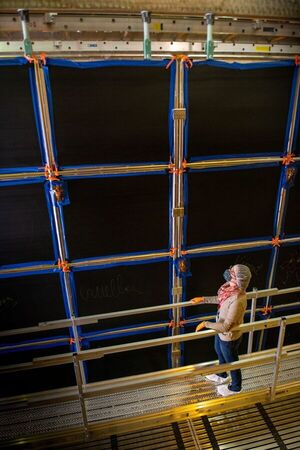
Scientists assemble final detector of Fermilab’s Short-Baseline Neutrino Program
"With a directive to look for physics beyond the standard model and study the behavior of the universe’s most elusive particles, the U.S. Department of Energy’s Fermi National Accelerator Laboratory’s Short-Baseline Neutrino Program has a full plate. Consisting of three detectors — the Short-Baseline Near Detector, MicroBooNE and ICARUS — the program will expand on Fermilab’s internationally acclaimed neutrino research activities. By studying neutrino properties with these detectors, scientists will learn more about the role these tiny particles play in the universe. On the Fermilab campus, the three detectors will sit staggered along a straight line, each probing an intense neutrino beam. SBND, under construction, will be closest to the neutrino beam source, just 110 meters away from the area where protons smash into a target and create a beam of muon neutrinos. MicroBooNE, which began taking data in 2015, sits 360 meters from SBND, and ICARUS, which will begin its physics run this fall, sits 130 meters beyond MicroBooNE." [...]
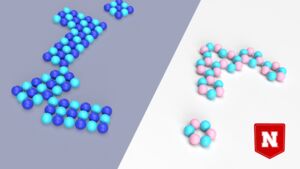
Pinch the salt: Dissolved salt can reassemble at nanoscale, simulations say
"Welcome to Pocket Science: a glimpse at recent research from Husker scientists and engineers. For those who want to quickly learn the “What,” “So what” and “Now what” of Husker research. What? Any cook worth their salt knows that a dash of the stuff — which consists mostly of the compound sodium chloride — will dissolve when dropped into a pot of even room-temperature water. But as a chemist who has spent decades researching how substances behave when confined to infinitesimal spaces, Nebraska’s Xiao Cheng Zeng also knows that what happens at the macroscale does not necessarily hold at the nanoscale. So what?" [...]
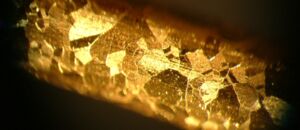
Non-toxic technology extracts more gold from ore
"Study shows new chloride-based process recovers 84% of gold compared to the 64% recovered with traditional methods Gold is one of the world’s most popular metals. Malleable, conductive and non-corrosive, it’s used in jewelry, electronics, and even space exploration. But traditional gold production typically involves a famous toxin, cyanide, which has been banned for industrial use in several countries. The wait for a scalable non-toxic alternative may now be over as a research team from Aalto University in Finland has successfully replaced cyanide in a key part of gold extraction from ore. The results are published in Chemical Engineering. Traditionally, once gold ore is mined from the ground, it’s crushed to a powder and passed through a series of tanks in a process called leaching." [...]
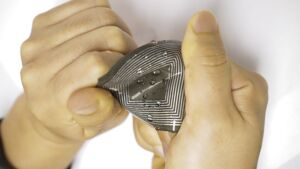
UCLA Bioengineers Develop New Class of Human-Powered Bioelectronics
"A team of bioengineers at the UCLA Samueli School of Engineering has invented a novel soft and flexible self-powered bioelectronic device. The technology converts human body motions — from bending an elbow to subtle movements such as a pulse on one’s wrist — into electricity that could be used to power wearable and implantable diagnostic sensors. The researchers discovered that the magnetoelastic effect, which is the change of how much a material is magnetized when tiny magnets are constantly pushed together and pulled apart by mechanical pressure, can exist in a soft and flexible system — not just one that is rigid. To prove their concept, the team used microscopic magnets dispersed in a paper-thin silicone matrix to generate a magnetic field that changes in strength as the matrix undulated. As the magnetic field’s strength shifts, electricity is generated. Nature Materials published today a research study detailing the discovery, the theoretical model behind the breakthrough and the demonstration." [...]

Rover images confirm Jezero crater is an ancient Martian lake
"The findings include signs of flash flooding that carried huge boulders downstream into the lakebed. The first scientific analysis of images taken by NASA’s Perseverance rover has now confirmed that Mars’ Jezero crater — which today is a dry, wind-eroded depression — was once a quiet lake, fed steadily by a small river some 3.7 billion years ago. The images also reveal evidence that the crater endured flash floods. This flooding was energetic enough to sweep up large boulders from tens of miles upstream and deposit them into the lakebed, where the massive rocks lie today. The new analysis, published today in the journal Science, is based on images of the outcropping rocks inside the crater on its western side. Satellites had previously shown that this outcrop, seen from above, resembled river deltas on Earth, where layers of sediment are deposited in the shape of a fan as the river feeds into a lake." [...]
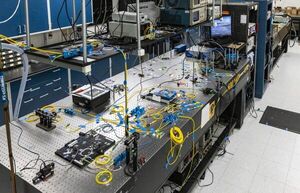
Researchers reach quantum networking milestone in real-world environment
"A team from the U.S. Department of Energy’s Oak Ridge National Laboratory, Stanford University and Purdue University developed and demonstrated a novel, fully functional quantum local area network, or QLAN, to enable real-time adjustments to information shared with geographically isolated systems at ORNL using entangled photons passing through optical fiber. This network exemplifies how experts might routinely connect quantum computers and sensors at a practical scale, thereby realizing the full potential of these next-generation technologies on the path toward the highly anticipated quantum internet. The team’s results, which are published in PRX Quantum, mark the culmination of years of related research. Local area networks that connect classical computing devices are nothing new, and QLANs have been successfully tested in tabletop studies. Quantum key distribution has been the most common example of quantum communications in the field thus far, but this procedure is limited because it only establishes security, not entanglement, between sites. “We’re trying to lay a foundation upon which we can build a quantum internet by understanding critical functions, such as entanglement distribution bandwidth,” said Nicholas Peters, the Quantum Information Science section head at ORNL." [...]

ArtSea Inks and Material—a Sustainable Art Media for 2-D and 3-D Compositions
"From Rembrandt to Picasso, artists have been using the right combination of color and texture to conjure emotive responses. Today, artists have capitalized on the versatility of additive manufacturing, more commonly known as 3-D printing, to create, restore, and modify art. Current 3-D printing processes predominantly use plastic, which requires high heat to melt the media, thereby limiting manual printing. Researchers at PNNL have invented bio-derived polymers and inks that can be printed at room temperature to bridge this gap. ArtSea Inks and Material are a novel, seaweed-based polymer “doped” with pearlescent mica powder. The mica pigments in the ArtSea Inks serve as chromatic additives that impart color without interfering with the printing and cross-linking of the seaweed polymer material." [...]
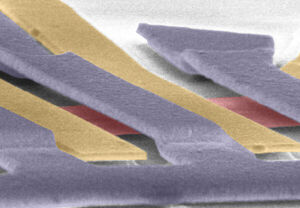
Novel quantum effect discovered in naturally occurring graphene
"International research team led by University of Göttingen finds atomically-thin carbon generates its own magnetic field Usually, the electrical resistance of a material depends very much on its physical dimensions and fundamental properties. Under special circumstances, however, this resistance can adopt a fixed value that is independent of the basic material properties and “quantised” (meaning that it changes in discrete steps rather than continuously). This quantisation of electrical resistance normally occurs within strong magnetic fields and at very low temperatures when electrons move in a two-dimensional fashion. Now, a research team led by the University of Göttingen has succeeded in demonstrating this effect at low temperatures in the almost complete absence of a magnetic field in naturally occurring double-layer graphene, which is just two atoms thick. The results of the study have been published in Nature. The team from the University of Göttingen, Ludwig Maximilian University of Munich and the University of Texas (Dallas) used two-layer graphene in its natural form." [...]

New type of magnetism unveiled in an iconic material
"An international research team led by scientists at the University of Konstanz makes a path-breaking discovery in strontium ruthenate – with potential for new applications in quantum electronics Since the discovery of superconductivity in Sr2RuO4 in 1994, hundreds of studies have been published on this compound, which have suggested that Sr2RuO4 is a very special system with unique properties. These properties make Sr2RuO4 a material with great potential, for example, for the development of future technologies including superconducting spintronics and quantum electronics by virtue of its ability to carry lossless electrical currents and magnetic information simultaneously. An international research team led by scientists at the University of Konstanz has been now able to answer one of the most interesting open questions on Sr2RuO4: why does the superconducting state of this material exhibit some features that are typically found in materials known as ferromagnets, which are considered being antagonists to superconductors? The team has found that Sr2RuO4 hosts a new form of magnetism, which can coexist with superconductivity and exists independently of superconductivity as well. The results have been published in the current issue of Nature Communications. After a research study that lasted several years and involved 26 researchers from nine different universities and research institutions, the missing piece of the puzzle seems to have been found." [...]

How to Train Your Magnet
"New accelerator magnets are undergoing a rigorous training program to prepare them for the extreme conditions inside the upgraded Large Hadron Collider When training for a marathon, runners must gradually ramp up the distance of their runs. They know that their runs in the early days of training do not define what they will one day be capable of; they’re building a strong foundation that will help them reach their full potential. The car-length magnets that steer particles around the Large Hadron Collider go through a similar process. Scientists must push them to their limits, time and again, until they can handle enormous amounts of electrical current. “These magnets are great marvels of engineering,” says scientist Kathleen Amm, director of the Magnet Division at the US Department of Energy’s Brookhaven National Laboratory in New York. “But one thing we cannot do is put them straight into an accelerator." [...]
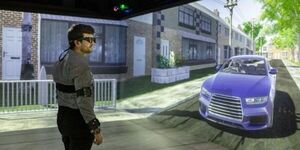
Making self-driving cars human-friendly
"Automated vehicles could be made more pedestrian-friendly thanks to new research which could help predict when people will cross the road. Leeds scientists investigating how to better understand human behaviour in traffic say that neuroscientific theories of how the brain makes decisions can be used in automated vehicle technology to improve safety and make them more human-friendly. The researchers set out to determine whether a decision-making model called drift diffusion could predict when pedestrians would cross a road in front of approaching cars, and whether it could be used in scenarios where the car gives way to the pedestrian, either with or without explicit signals. This prediction capability will allow the autonomous vehicle to communicate more effectively with pedestrians, in terms of its movements in traffic and any external signals such as flashing lights, to maximise traffic flow and decrease uncertainty. Drift diffusion models assume that people reach decisions after accumulation of sensory evidence up to a threshold at which the decision is made. Professor Gustav Markkula, from the University’s Institute for Transport Studies, is senior author of the study." [...]
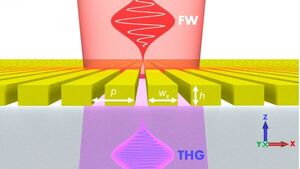
Smuggling Light Through Opaque Materials
"Newly proven physics opens chalcogenide glasses to applications at visible and ultraviolet wavelengths. Electrical engineers at Duke University have discovered that changing the physical shape of a class of materials commonly used in electronics and near- and mid-infrared photonics—chalcogenide glasses—can extend their use into the visible and ultraviolet parts of the electromagnetic spectrum. Already commercially used in detectors, lenses and optical fibers, chalcogenide glasses may now find a home in applications such as underwater communications, environmental monitoring and biological imaging. The results appear online on October 5 in the journal Nature Communications. As the name implies, chalcogenide glasses contain one or more chalcogens—chemical elements such as sulfur, selenium and tellurium. But there’s one member of the family they leave out: oxygen." [...]
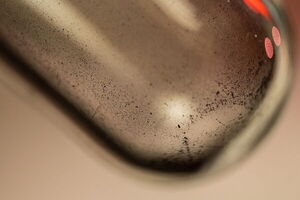
Urban mining for metals flashes electronic trash into treasure
"Flash Joule heating by Rice lab recovers precious metals from electronic waste in seconds In what should be a win-win-win for the environment, a process developed at Rice University to extract valuable metals from electronic waste would also use up to 500 times less energy than current lab methods and produce a byproduct clean enough for agricultural land. The flash Joule heating method introduced last year to produce graphene from carbon sources like waste food and plastic has been adapted to recover rhodium, palladium, gold and silver for reuse. A report in Nature Communications by the Rice lab of chemist James Tour also shows highly toxic heavy metals including chromium, arsenic, cadmium, mercury and lead are removed from the flashed materials, leaving a byproduct with minimal metal content. Instantly heating the waste to 3,400 Kelvin (5,660 degrees Fahrenheit) with a jolt of electricity vaporizes the precious metals, and the gases are vented away for separation, storage or disposal. Tour said that with more than 40 million tons of e-waste produced globally every year, there is plenty of potential for “urban mining.” “Here, the largest growing source of waste becomes a treasure,” Tour said. “This will curtail the need to go all over the world to mine from ores in remote and dangerous places, stripping the Earth’s surface and using gobs of water resources." [...]

Tying quantum computing to AI prompts a smarter power grid
"Fumbling to find flashlights during blackouts may soon be a distant memory, as quantum computing and artificial intelligence could learn to decipher an electric grid’s problematic quirks and solve system hiccups so fast, humans may not notice. Rather than energy grid faults turning into giant problems – such as voltage variations or widespread blackouts – blazing fast computation blended with artificial intelligence could rapidly diagnose trouble and find solutions in tiny splits of seconds, according to Cornell research forthcoming in Applied Energy (Dec. 1, 2021). “Energy power system failures are an old problem and we are still using classic computational methods to resolve them,” said Fengqi You, the Roxanne E. and Michael J. Zak Professor in Energy Systems Engineering in the College of Engineering. “Today’s power systems can benefit from AI and the computational power of quantum computing, so power systems can be stable and reliable.” You, along with doctoral student Akshay Ajagekar, are co-authors of “Quantum Computing-based Hybrid Deep Learning for Fault Diagnosis in Electrical Power Systems.” U.S. utilities generated about 4 trillion kilowatt hours in 2020, according to the federal U.S. Energy Information Administration (USEIA). This electricity is carried over regional grids, but due to storms, downed trees, ancient transmission lines and other misfortunes, outages occur. In 2016, for example, U.S. customers experienced on average more than four hours of electric energy interruption, while in 2017 that average rose to nearly eight hours, according to USEIA." [...]

Induced flaws in quantum materials could enhance superconducting properties
"In a surprising discovery, an international team of researchers, led by scientists in the University of Minnesota Center for Quantum Materials, found that deformations in quantum materials that cause imperfections in the crystal structure can actually improve the material’s superconducting and electrical properties. The groundbreaking findings could provide new insight for developing the next generation of quantum-based computing and electronic devices. The research just appeared in Nature Materials, a peer-reviewed scientific journal published by Nature Publishing Group. “Quantum materials have unusual magnetic and electrical properties that, if understood and controlled, could revolutionize virtually every aspect of society and enable highly energy-efficient electrical systems and faster, more accurate electronic devices,” said study co-author Martin Greven, a Distinguished McKnight Professor in the University of Minnesota’s School of Physics and Astronomy and the Director of the Center for Quantum Materials. “The ability to tune and modify the properties of quantum materials is pivotal to advances in both fundamental research and modern technology.” Elastic deformation of materials occurs when the material is subjected to stress but returns to its original shape once the stress is removed. In contrast, plastic deformation is the non-reversible change of a material’s shape in response to an applied stress—or, more simply, the act of squeezing or stretching it until it loses its shape." [...]

Mathematician Answers Chess Problem About Attacking Queens
"The n-queens problem is about finding how many different ways queens can be placed on a chessboard so that none attack each other. A mathematician has now all but solved it. If you have a few chess sets at home, try the following exercise: Arrange eight queens on a board so that none of them are attacking each other. If you succeed once, can you find a second arrangement? A third? How many are there?" [...]
Projetos Maker
Diversos Projetos interessantes.
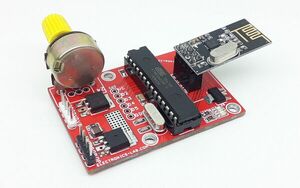
Radio Remote Control LED Dimmer Using NRF24L01 – Arduino Compatible
"This is an easy-to-make LED dimmer using RF remote control. The project is capable of driving a load up to 24W (2A X 12V LED). Any 12V single or 12V LED strip can be used. This is an open-source Arduino compatible hardware that has Atmega328 microcontroller, Potentiometer, MOSFET, 5V Regulator, 3.3V Regulator, NRF24L01 Radio modules, and few other components. The same PCB can be used for Transmitter and Receiver. LED D2 Power LED, LED D1 optional." [...]
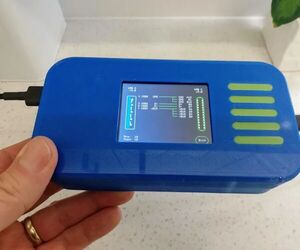
Touch Screen Cable Tracer
"Diagnose the type and integrity of USB and RJ45 cables with this Touchscreen Cable Tracer. Identify the exact wiring configuration, diagnose broken wiring, and plug pin connections. - Test over 10 cables types using RJ45, USB B/B3, USB A/A3, USB C, USB Mini, USB Micro/Micro3 - Touch screen menu Auto Detect Mode and Manual Mode for a deeper diagnosis - Displays Loop-back of pins on any of the input and output ports in use Based on the popular Arduino Cable Tracer the Touch Screen Cable Tracer is 70% smaller, uses an Arduino shield that eliminates over 20 hours of meticulous soldering, and uses snap-together parts with minimal soldering. I have tried to minimise the number of parts to make this more accessible to makers of all skill levels - Arduino Mega 2560 Board - Cable Tracer Arduino Mega Shield - Two options - Order a fully assembled and tested shield from here - Create and order your own PCB from JLPCB see step 4 - ILI9325 2.8" TFT Touch Screen x 1 - Case - 3d Printed model with 3 parts provided in instructable - 1m length USB A cable x 1 - used to connect USB charger to Cable Tracer unit - USB A charger - used to power the unit - 3 x M3 diameter 8mm length screws - 3 x 3mm washers - 3d printed model provided - Double Row Header Connector Strip 2.54mm - 1 of 16x2 - Single Row Header Connector Strip 2.54mm - 5 of 8x1 and 1 of 6x1" [...]

Simple DIY FM Transmitter
"Ever wondered how come you can just simply tune in to your favorite FM Radio Channel. Moreover, ever had the curiosity of making your own FM Station on a specific frequency? Well if the answer is Yes to any of those questions then you are at the right place!. We are going to look into making small FM Transmitter for Hobby Purposes with a really basic component guide and components that are readily available off the shelf. Working Explanation: The major game here is of the Antenna and the Mic. The Mic converts sound waves into electrical voltage which is filtered via a resistor-capacitor network and amplified using the 2N3904 transistor (or 2N3866/2N4427 for long range)." [...]

PicoLight - Minimalist Light for Product Shots
"PicoLight is a minimalist adjustable light for low-light photography, based on the Raspberry Pi Pico. One of the activities I really enjoy while working on a new project is documenting it. I love getting creative while taking pictures of the process and of the final products. A thing that has been really handy in this process is an adjustable studio light, which I use to add a bit of colour to the background (that's why most of the pictures in these tutorials are purple hehe). PicoLight is a smaller version of a classic studio light that is useful for playing with colours in low-light shots or for coloured shadows photography. How it works PicoLight consists of two PCBs and a white acrylic panel (which is great for diffusing the light) sandwiched together." [...]
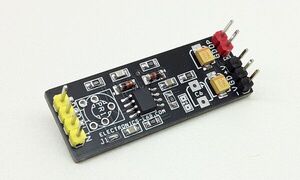
Precision Full-Wave Rectifier – Dual-Supply
"This is a dual-supply precision full-wave rectifier board that can turn alternating current (AC) signals into single polarity signals. The OPAMPs, U1A, and U1B, buffer the input signal and compensate for the voltage drops across D1 and D2 allowing for small signal inputs. This implementation functions with limited distortion for 20Vpp input signals at frequencies up to 50 kHz and for signals as small as 50 mVpp at frequencies up to 1kHz. The circuit can be used in applications that need to quantify the absolute value of input signals which have both positive and negative polarities. " [...]
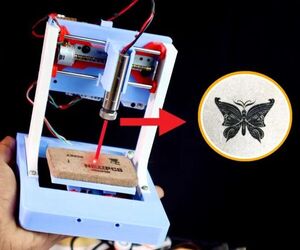
DiY Mini Laser Engraver
"Whats up, In this instructable, I am making an Awesome mini laser engraver from old DVD writers. It's very interesting project for any electronics hobbyist & Engineers. You can use this laser engraver machine to make any kind of design, logo, art on the surface like WOOD, MDF, PLYWOOD, VNYL Paper. I got this Laser engraver's idea from Maggie Shah. Here's the version of his laser engraver I remixed his project with my own touch. Thankfully, with this great little DIY project, you can make your own out of some common electrical components, some old DVD writers, and some 3D printed parts!" [...]
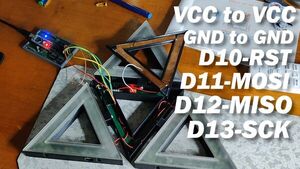
Over Engineered TriGlow
"TriaGlow is a Nanoleaf like setup but white. It's fully 3D Printed and controlled by a touchpad switch. (touch switch works in mid-air) So I made this Nanoleaf like device that doesn't have RGB LEDs inside, instead, it has white Light and is controlled by a touch switch. It's a fancy lighting setup that can illuminate your room and it looks pretty sick because of its shape. I made few modifications to the touch switch which made it more sensitive so this light can be turned ON or OFF in mid-air. Just bring your hand closer to the center part of the triangle and that will trigger the Light Sequence, by the way, this method of turning this light on-off by punches, I call this LightFu." [...]
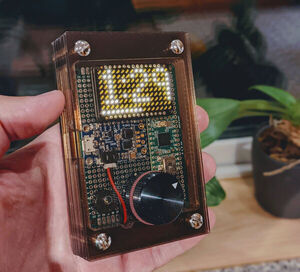
kitchen timer
"Here's the bill of materials I ended up with: Teensy 2.0 Adafruit 16x9 Charlieplexed PWM LED Matrix Driver LED Charlieplexed Matrix - 9x16 LEDs - Warm White Rotary Encoder Solid Machined Metal Knob PowerBoost 500 Charger Lithium Ion Polymer Battery - 3.7v 2500mAh Mini Magnet Feet for RGB LED Matrices Piezo Buzzer I supplemented some additional fasteners to screw into the mini magnet feet from the front clamping the case layers together. " [...]
Adafruit NeoPixel Überguide
"Incorporating scads of LEDs into an electronic project used to be a hairy prospect, a veritable rat’s nest of wires and code. The arrival of dedicated LED driver chips brought welcome relief, offloading grunt work from the microcontroller and allowing one to focus on the application. Much simpler, but still not “Christmas light” simple. The WS2812 Integrated Light Source — or NeoPixel in Adafruit parlance — is the latest advance in the quest for a simple, scalable and affordable full-color LED. Red, green and blue LEDs are integrated alongside a driver chip into a tiny surface-mount package controlled through a single wire. They can be used individually, chained into longer strings or assembled into still more interesting form-factors." [...]
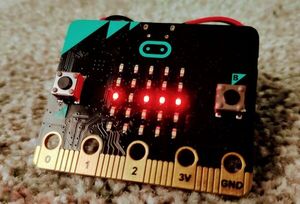
Morse De-Coder
"Everyone has heard of Morse Code, but does anyone actually remember anything other than SOS (...---...)? This device simply decodes Morse Code into the correct letters and numbers. Use it however you like - whether that's practicing at home, or trying figure out what that flashing torch on a distant hillside is trying to say. You never know, it might save a life! Supplies 1x BBC micro:bit 1x Computer to upload program 1x MakeCode Website (https://makecode.microbit.org/#editor)" [...]
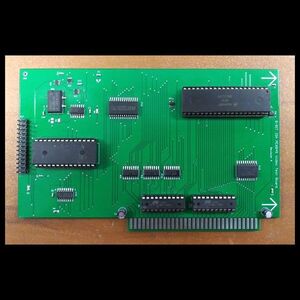
ISA 8-Bit Video Experiments
"A Series of Experiment to Create an ISA 8-Bit Video Card With the goal of creating an 8-bit ISA Video cards, this project is to create a series of experimental boards to validate portions of the design. This project aims to recreate the original design for the IBM MDA and CGA video cards with modern output methods of TFT LCD, VGA and DVI. The inspiration for the project came from the The Cheap Video Cookbook from Dan Lancaster. There are a few additional accessory projects that assist in development of this project. They include: 8-Bit ISA I/O Card 8-Bit ISA ROM Card LCD Interface Board PC ROM Bios Extension Tools Additional I've created a Hackaday.io list with various projects and info: Experiments in 8-Bit IBM PC Architecture " [...]

DIY Zambretti Weather Forecaster on VFD Display
"Weather forecaster, which displays the weather forecast on the screen in the form of descriptive text. Story In one of my previous videos, I described how to make a cheap Advanced Barometer, used by sailors, yachtsmen, etc. It is a great weather forecasting device but still requires some knowledge in the field of meteorology. This time I will show you how to make a Zambreti weather forecaster, which displays the weather forecast on the screen in the form of descriptive text. It contains a total of 26 reports that describe in detail the weather forecast. The original Zambretti Forecaster was developed in 1915 by precision instrument makers Negretti and Zambra." [...]
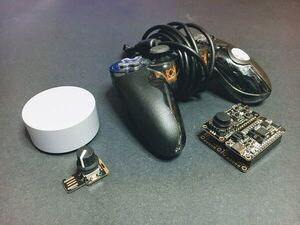
Custom HID Devices in CircuitPython
"What is HID? HID stands for "Human Interface Device". Keyboards, mice, digitizer tablets, joysticks, and game controllers are all HID devices. CircuitPython can emulate three standard HID devices by default: mouse, keyboard and consumer control. These are described in more detail in CircuitPython Essentials Guide and the Customizing USB Devices Guide. All operating systems (e.g., Windows, macOS, or Linux) have built-in support for certain standard devices like keyboards and mice." [...]
IoT Office Room Cleaning Tracker System
"Father-son project to keep Office Rooms healthy by automating the cleaning tracking process using IoT, AWS and mobile Apps. Story What problem are we going to solve? Companies are starting to return back to their offices if COVID is down. They need to keep their environments clean, and their employees safe. They also need to comply with sometimes complex local regulations and prove evidences they have met the rules. Sometimes they even need to pay a great amount of fine if they forget to keep places clean (as they risk the health of their own employees)." [...]

Voice Activated, 3D Printed Tali's Helmet!
"It blinks when you speak! This is the code and electronics diagram for my Tali's helmet from Mass Effect. The helmet is 3D printed and the visor is vacuum formed. You can find all the files needed for 3D printing of the helmet on my Thingiverse: https://www.thingiverse.com/bzqp/designs I've been dreaming about making of Tali's helmet for years. Finally I decided I'm profficient enough to pull it off! " [...]

WIFI robot car with 3d printed mechanum wheels
"In This article, I have provided every single thing with a proper explanation so that beginners can try also. This is the easiest IoT P L298N motor Driver:- To control the speed of the motors, here I have used the L298N motor driver. L298N is a very Low-Cost Motor Driver and you can also use it in various projects in the future. You can also found the library file for this motor driver easily. Chassis TT Gear Motor PCB Boards By JLCPCB:- Then I have designed a PCB for NodeMCU. It will be easier to connect all the parts together with a PCB board." [...]
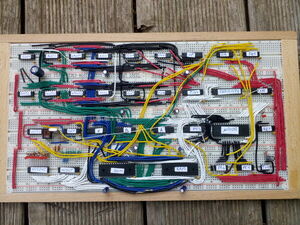
BreadBin computer
"After various experiments and failed attempts to design a 7400-based computer, I came to a quite minimalistic 8-bit approach which is nevertheless pretty versatile and can utilize a surprisingly large amount of memory resources. The CPU core itself executes its program from a static 64K flash memory and can access 32 bytes of internal RAM (which can be considered registers for all practical purposes). Access to the external memory area (up to 16MB of address space) allows addition of RAM, ROM and memory mapped IO. In the current setup this directly mirrors the capabilities of my OS816 reference design. " [...]
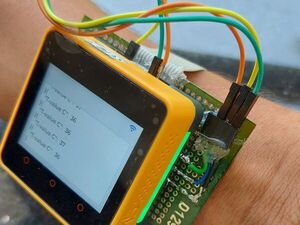
Wearable Temperaure Monitor- AWS IoT-EduKit
"Wearable temperature measuring device using AWS IoT-EduKit, It uploads data to AWS cloud and indicate LED bar with respect to temperature. In the pandemic situation aged people facing many problems, through this project I am going to share one of the problems solving, that is temperature monitoring with AWS IoT EduKit. More over that we can connect puls-oxymeter, heart rate sensor, so we will get all required data of a patient to monitor. One of the symptoms of covid-19 is fever. So they have to check the temperature continuously. This project will help them to indicate the temperature and also upload the values in the AWS cloud." [...]

Bluetooth RPM Letterboard
"A Rapid Prompting Method (RPM) letterboard with capacitive touch sensors & Bluetooth connectivity for enhanced functionality The Rapid Prompting Method (RPM) is a technique developed by Soma Mukhopadhyay as a vehicle for non-verbal autistic children (and adults) to communicate and pursue an academic education. In effect, it unlocks them from a silent isolation to prove they are intellectually intact. It's life-changing for both the autistic child and for the people who love them. I know. I'm the (amazed, proud, ecstatic) parent of one (and the amazed, proud & ecstatic parent of another, neurotypical giant that is his brother). The method is not without its controversy, proving that when you know one autistic person, you know ONE autistic person: every case is different and some things work for some and not for others." [...]
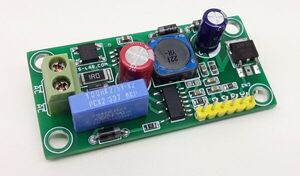
AC Voltage Zero Cross Detector
"This project provides AC voltage zero-cross timing detection and a DC voltage after diode rectification with high accuracy. Possible applications for such circuits are AC motor controllers, AC lamp controllers, AC Dimmer Controllers, Home Appliances. The circuit outputs a zero-cross signal from 90 Vac to 264 Vac input. The project is based on BM1Z102FJ chip which outputs a high precision zero-cross timing of targeted AC voltage and a DC voltage after diode rectification of high accuracy. The project also includes high voltage offline AC to DC converter chip BM2P129TF. AC VOLTAGE ZERO CROSS DETECTION By monitoring the voltage between the VH_AC1 and VH_AC2 pins, this IC outputs the zero-cross point of AC voltage from the ACOUT pin." [...]

MEMS Microphone Pre-Amplifier with Compression and Noise Gating – Studio Quality Microphone Pre-Amplifier
"MEMS Microphones is setting a new performance benchmark across a growing number of industries. These innovative silicon microphones were designed to extend the benefits of the lowest possible self-noise (high SNR) and lowest distortion to an ever-expanding number of applications. The project presented here is a low noise analog MEMS microphone Preamplifier with compression and noise gating. The project provides a studio-quality audio experience. The project is built using SSM2167 chip and InvenSense ICS-40180 Low-Noise Microphone with bottom port and analog output. This is a complete microphone signal conditioning project." [...]

Haiku eInk Reader Version 2
"Honey… I shrunk the Kindle. Well, not exactly. I’ve made a new one with Arduino MKRZero and 2.9” eInk display just to read Japanese Haikus. My first version of this device was made in a hurry and I left some important things behind like retrieving Haikus txt from microSD card, integrating bmp frames, fonts management, on/off switch and a better looking 3d printed case. So, here it is: Haiku Reader v2.0 Parts required - Arduino MKR Zero: has enough power for bmps backgrounds and also microSD slot - Waveshare 2, 9 eink display - Dual button - Toggle switch - Some jumper cables - 3.7v battery and TP 4056 or Arduino MKR Zero compatible LiIon battery with connector - Custom 3d printed case (STL files available) - 4 screws" [...]
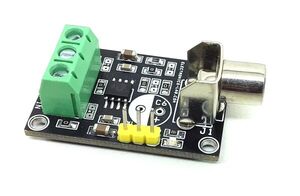
Twisted-Pair Cable-CAT5 – Composite Video Differential Receiver Amplifier
"The circuit presented here is a high frequency differential line receiver amplifier which has excellent common-mode rejection at its inputs. The project is an ideal solution for a receiver for composite video signals that are transmitted over long distance on twisted-pair cables like CAT5. Category 5 cables are very common in office settings and are extensively used for data transmission. These cables can also be used for the analog transmission of signals such as video. These long cables pick up noise from the environment they pass through. This noise does not favour one conductor over another and therefore is a common-mode signal." [...]

12W Constant-Current LED Driver with PWM Dimming – 12V DC@1A Input
"This is a high-performance, adjustable constant current, and PWM dimmer project. It provides accurate output constant current and PWM control. The circuit regulates the current flowing through a LED/LED array to maintain the desired level of light output. The board consists of CAT4101 LED driver chip and LTC6992-1 PWM generator chip. The CAT4101 is a constant-current sink driving a string of high-brightness LEDs up to 1A with a very low dropout of 0.5 V at full load. It requires no inductor, provides a low noise operation, and minimizes the number of components." [...]
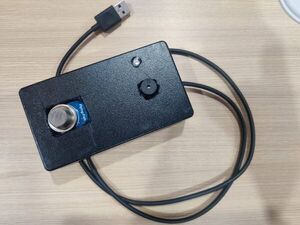
Smart LPG detector with ESP RainMaker Phone Alert
"Smart LPG leak detector device which generates phone alert notification using ESP RainMaker In these hurry days, it does happen that many a times, we miss on many things which can be a major cause of concern for us and our family. One of these things is definitely our negligence to turn off the gas stove knob. This if taken carelessly can result in a tremendous loss, a loss to life as well. Even I was a defaulter to it. Hence I took the efforts to create a solution in the form of a tiny device which is efficient as well as cost effective. It is smart enough to alarm instantly on buzzer and on phone using notification alerts." [...]

Retro Digital Clock W/ Raspberry Pi Zero
"This project combines the amazing retro look, with the almost endless possibilities with Raspberry Pi and IoT. In this guide I will show exactly how I designed and put together this 3D printed Raspberry Pi Zero retro digital clock. By default it only displays the current time, but this can of course be customized to have much more functionality, just by adding more lines of code to the simple python program. If you want to, you can make it show the date, or the weather and temperature outside, by using a simple weather api, or maybe you want the display to show the news or current stock market prices. Feel free to play around with the idea and the design, and customize it to fit your needs. " [...]
Secção Videos
Videos interessantes.
That's all Folks!



